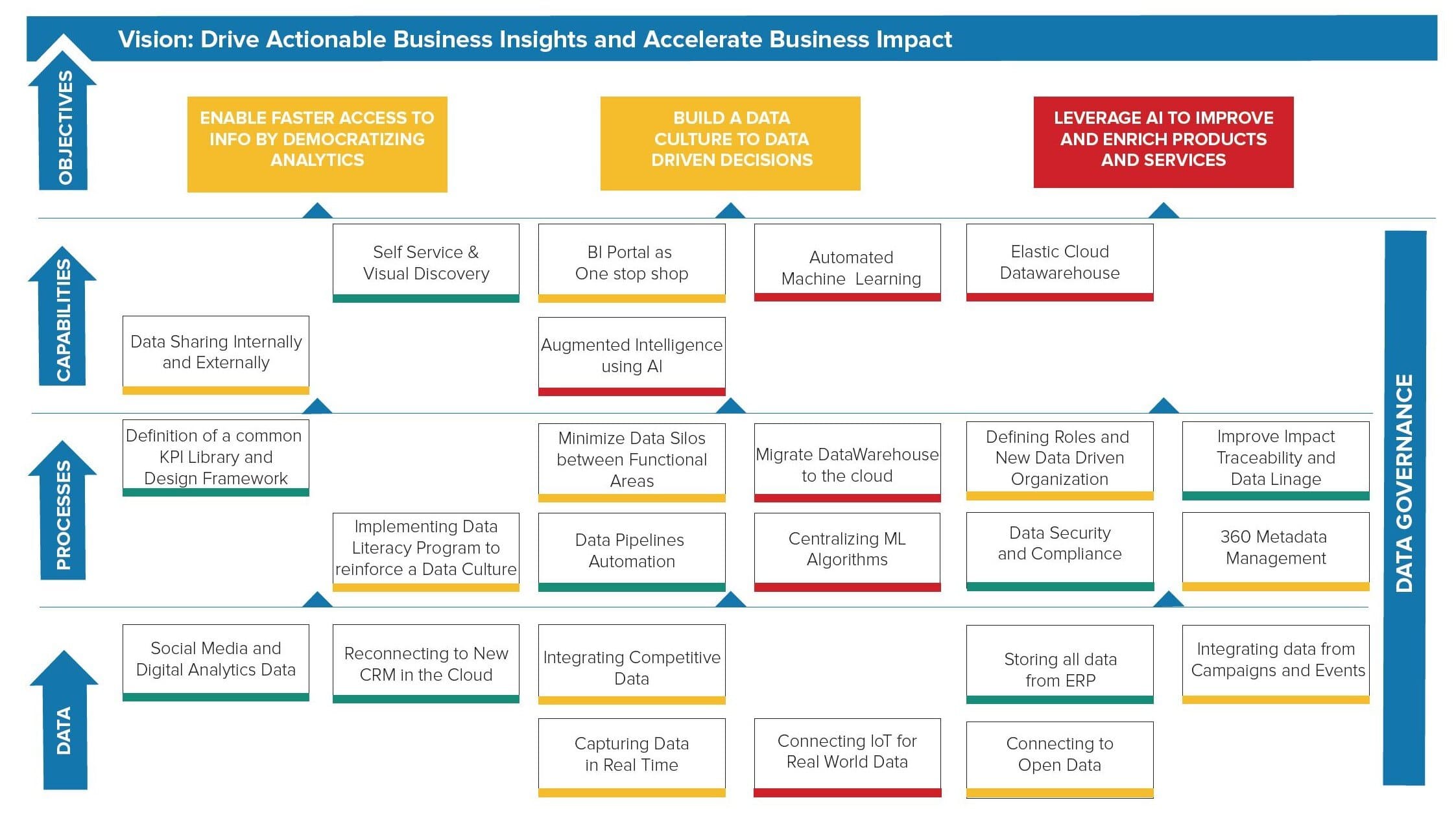Strategic maps are the visual representation of a strategy. They provide a macro view of different actions through cause-and-effect relationships.
The pillars of a Data Strategy are data, processes, technology, people, capabilities, and objectives. In each pillar, a company should have a tactical plan to move them through the different phases until they achieve their goals.
A strong data culture, continuous data governance plan, and an understanding of the data life cycle are three qualities that will drive the strategy.
“You can’t measure what can’t be described.” - Robert Kaplan & David P. Norton
Example of a Strategic Map

What are the benefits of a Strategic Map?
- Commitment: Creating a strategic map involves all C-Level roles and transforms the strategy into an ongoing process.
- Efficiency: The strategic map simplifies the alignment of different business areas and makes meetings more efficient and productive.
- Resilience: Cause and effect actions make it easier to execute pilot tests, validate them in segments without affecting processes, and pivot the strategy if necessary.
- Communication: Facilitates communication with teams, so they understand the overall benefits beyond the success of their area.
- Integrated Planning: It provides a highly accurate estimate of the amount of time and resources needed for each project.
.png?width=2000&name=SDG%20-%20Logo%20White%20(1).png)

